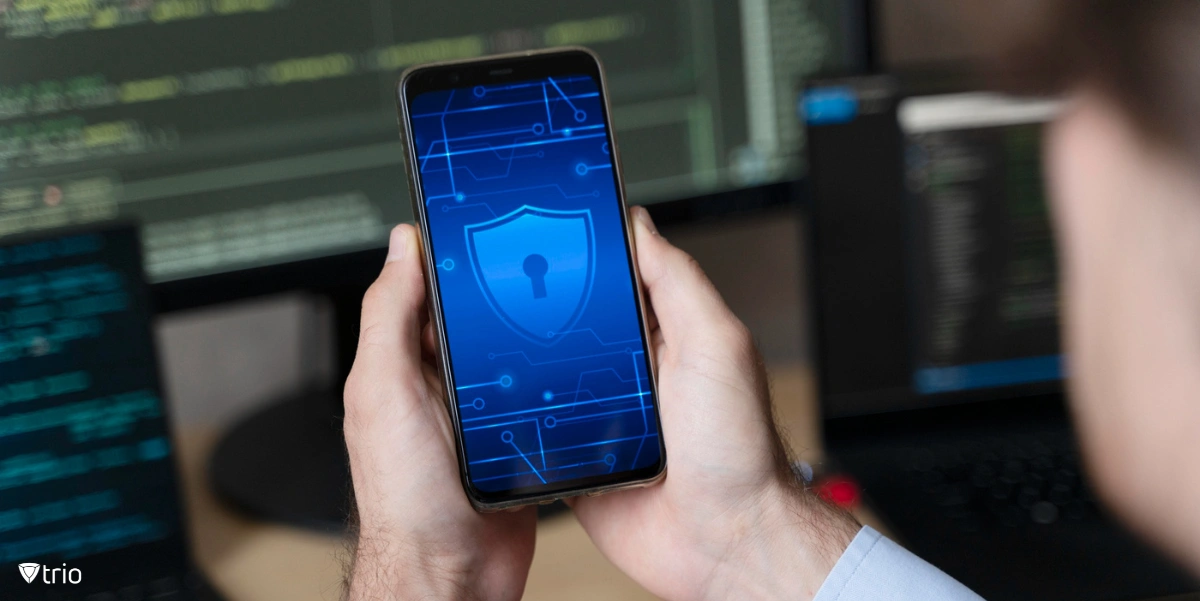The digital landscape has transformed education, embedding technology in classrooms worldwide. As a result, cyber security in education has become paramount, protecting both students and educational data. Cyber threats are evolving, making robust security measures crucial to maintaining a safe learning environment. Cyber security in schools now extends beyond traditional IT practices, addressing new challenges as they emerge.
While MDM for schools offers substantial protection, focusing solely on these solutions might overlook broader security strategies needed to combat cyber threats. The prevalence of cyber threats in educational institutions underscores the need for comprehensive cyber security measures. Educators and administrators must prioritize holistic approaches to safeguard their digital realms effectively.
The Cyber Threat Landscape in Education
As digital tools become integral to education, the associated cyber threats also grow, requiring immediate and effective response strategies.
The Vulnerability Spectrum
Educational institutions face a variety of cyber threats, including phishing attacks, malware, and ransomware. Each of these can infiltrate school networks, often targeting personal information and sensitive data. The increasing sophistication of these attacks elevates the security risks involved, highlighting the necessity for enhanced network security measures in schools.
Alarming Numbers
Recent studies show a significant uptick in cyber-attacks targeting educational bodies. In the past year, educational institutions have seen a significant rise in ransomware attacks, with a staggering 84% increase in such incidents over just a six-month period, highlighting a growing threat to the sector. This trend underscores the pressing need for cybersecurity education online and offline to raise awareness and preparedness.
Consequences Unfold
The impacts of these security breaches are profound and multifaceted. Loss of personal information and sensitive data can lead to identity theft and legal repercussions. Moreover, disruptions in educational processes due to a data breach or ransomware can halt teaching, affecting learning outcomes and institutional reputation.
Importance of Cyber Security Measures in Schools
In today’s digital age, educational institutions are treasure troves of valuable information, making them prime targets for cyber-attacks.
Guarding the Gatekeepers
Robust cyber security is not optional; it’s essential for protecting everyone within the educational ecosystem. From students to faculty, the safekeeping of sensitive data hinges on effective security measures. Security breaches in higher education can lead to significant data loss, affecting personal information and institutional data. Implementing stringent data security protocols and incident response strategies is crucial.
Educational Continuity
Maintaining the integrity and continuity of educational services relies heavily on solid cyber defenses. Schools must be adept at managing their operating systems and networks to prevent disruptions caused by cyber incidents. A proactive data breach response plan ensures that educational institutions can swiftly recover and sustain operations, minimizing downtime and academic disruption.
Ethical Data Stewardship
Educational institutions bear a legal and ethical obligation to protect student data. Data loss prevention strategies and security awareness training and education are foundational to fulfilling these responsibilities. By safeguarding data, schools uphold their trustworthiness and comply with regulatory requirements, ensuring that students’ rights and privacy are respected.

Practical Cyber Security Strategies for Educational Institutions
To enhance cyber security within educational settings, institutions must adopt a strategic and multi-faceted approach. Here’s how.
Policy and Awareness
The cornerstone of any robust cyber defense strategy involves establishing comprehensive cyber security policies that are aligned with education requirements for cyber security. Regular training and awareness programs are crucial to equip both students and staff with the knowledge to identify threats such as phishing emails and to use social media safely. Such educational efforts help create a proactive security culture.
Technology Solutions
Technological safeguards are essential. Adopting strong antivirus and anti-malware software forms the first line of defense against malicious attacks. Implementing firewalls and robust intrusion detection systems further secures network perimeters. Moreover, regular software updates and patches close vulnerabilities, thwarting attacks before they exploit system weaknesses. Periodic penetration testing can also simulate attacks to test the strength of existing security measures.
Mobile Device Management
In an era where educational resources are increasingly accessed through mobile devices, mobile device management (MDM) becomes critical. MDM solutions aid in device provisioning and ensure secure access to educational resources, control over app installations, and the ability to manage devices remotely. These tools are vital in protecting the devices that staff and students rely on daily.
For educational institutions looking to enhance their cyber security measures, Trio offers a comprehensive MDM solution. We invite you to try Trio’s free demo to see firsthand how it can protect and manage mobile devices within your educational environment. This practical step can significantly strengthen your institution’s overall cyber security posture.
Implementing a Cyber Resilient Culture in Educational Settings
In a world increasingly driven by digital technology, educational settings are not exempt from cyber threats, making a resilient cyber culture essential.
Building Cyber Resilience
Educational institutions can thrive by fostering a culture of security among both students and staff. Encouraging this mindset involves teaching cyber security in schools, which prepares them to identify and mitigate risks such as ransomware attacks. By integrating practices like software usage tracking into the curriculum, schools empower their communities to navigate the digital world safely.
Security Practices for Educators
Educators and administrators play a pivotal role in maintaining a secure environment. Updating security protocols regularly ensures that defenses keep pace with evolving threats. As certified information systems security professionals emphasize, a proactive approach to security, including the promotion of strong, unique passwords, is crucial.
Promote Active Participation
It’s important to cultivate an atmosphere where everyone feels responsible for cyber safety. Encouraging the reporting of suspicious activities and integrating computer networking knowledge can significantly enhance an institution’s security posture. Information security analysts recommend these steps as part of a comprehensive strategy to safeguard educational settings.

Conclusion
To ensure safe and effective education, adopting robust cyber security measures is essential. Integrating advanced technologies like mobile device management can significantly enhance the security posture of educational institutions. It’s crucial for schools to remain proactive and continually educate themselves on the latest cyber security trends to protect against evolving threats.
Get Ahead of the Curve
Every organization today needs a solution to automate time-consuming tasks and strengthen security.
Without the right tools, manual processes drain resources and leave gaps in protection. Trio MDM is designed to solve this problem, automating key tasks, boosting security, and ensuring compliance with ease.
Don't let inefficiencies hold you back. Learn how Trio MDM can revolutionize your IT operations or request a free trial today!




